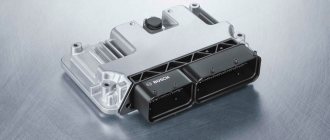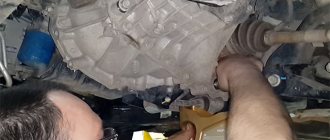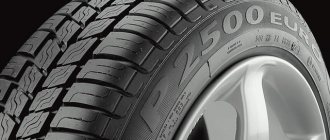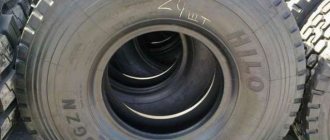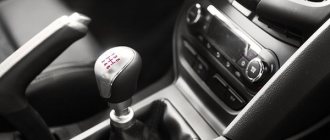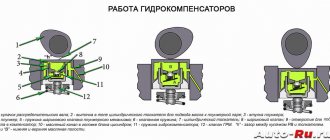Robot and automatic transmission: what is the difference and how to distinguish visually
To understand the difference between an automatic transmission and a robot, it is worth understanding the operating principle of each of these transmissions and the design of the system as a whole.
The automation is based on a control system, a torque converter and a planetary type gearbox with specific gears and clutches. Thanks to this design, speeds are switched autonomously without driver intervention. The guideline in this case is such parameters as driving mode, load and engine speed.
The relevance of installing the machine is observed on trucks and cars, as well as buses. If the car is front-wheel drive, the automatic transmission design is complemented by a differential and final drive.
The first thing that distinguishes a robot from an automatic transmission is its special design, which combines the capabilities of a manual and automatic transmission.
In fact, the mechanics in this case are supplemented by automatic control with actuators that are responsible for shifting gears and operating the clutch.
Shifting occurs in the same way as with a manual transmission, but the driver is not involved.
The primary goal of creating a robotic gearbox was to reduce the cost of the transmission and simultaneously combine all the advantages of manual and automatic gearboxes. It's all about ease of use and comfort. As a result, there are several options for designing the system.
- Using the example of BMW M series cars, we can consider the highest quality and well-known manual transmission called Sequental M Gearbox (SMG). The gearbox is a 6-speed manual, with electronically controlled hydraulics responsible for shifting gears and disengaging the clutch. Gears change in 0.08 seconds.
- Using the example of the Mercedes-Benz A-Class, we can consider another principle, where the electro-hydraulic clutch drive is installed on a mechanical basis. The driver participates in changing gears, but there are only two pedals. The electric drive independently monitors the position of the lever and gas pedal, so in this case there is no clutch and it disengages automatically. The numbers on the ABS and engine sensors help the electronics make calculations to avoid shifting jerks and abrupt engine stops.
- Using the example of Ford and Opel cars, we can consider the third principle, where hydraulic pumps are replaced by stepper motors. Despite the budgetary nature of this option, in practice it turned out to be not very successful, which is reflected in a delay in switching gears and strong jerks. However, the Toyota Corolla has a similar transmission, and the disadvantages mentioned are not present here.
So, robotic and automatic transmission: what is the difference between these two transmissions?
- The first difference is in the design. In the case of a robot, it is a mechanic with a control unit, the automation device is completely different.
- The smoothness and speed of switching is better with automatics.
- Almost all automatic transmissions do not have a manual shift function, while robotic transmissions have this function.
- Another difference between a robot and an automatic machine is the cost-effective repair and maintenance of the former.
- Savings are also reflected in the fact that the robot consumes less oil and fuel.
To finally draw conclusions about which is better: a robot or an automatic transmission, it is worth analyzing the positive and negative aspects of each transmission.
Pros and cons of automatic transmission
A comparative description of the advantages and disadvantages of automation is presented below.
| Advantages | Flaws |
|
|
Pros and cons of manual transmission
Next up is an analysis of the advantages and disadvantages of robotic transmissions.
| Advantages | Flaws |
|
|
When choosing which is better: a robot or an automatic machine, you should focus on three main principles - comfort, cost and reliability.
- An automatic transmission is worth choosing if comfort is of paramount importance to you.
- Robotic transmissions are more economical in all respects - the cost of the box and the machine itself, repairs, maintenance, fuel and oil consumption.
- In terms of reliability, it is impossible to make a clear choice between an automatic transmission and a robot, since neither of these transmissions is as reliable as a manual transmission. Automatic is more predictable when compared with manual transmission, nothing more.
To decide which transmission is better, you must first decide on your own ideas about the comfort, convenience and safety of driving a car.
When studying the characteristics of a car at the time of purchase, remember that the absence of a clutch pedal in both transmissions considered can lead to confusion and an inexperienced driver may mistake the robotic gearbox for an automatic transmission.
Please rate this material!
Automatic transmissions are confidently replacing manual transmissions in modern car models.
The word “automatic” refers to one of three types of transmission: classic automated, robotic or CVT.
Each of these options has advantages and disadvantages, so before buying a car you should find out what the difference is between robotic and automatic transmissions, and which one to choose depending on your own preferences.
It is easy to distinguish a classic automatic transmission from a robotic one by looking at the gearshift lever. The top position of the automatic transmission is indicated by the “P” icon - parking. When instead of this icon there are only the designations “N” - neutral and “R” - rear, we have a robotic device in front of us.
The automatic transmission is a complex, but at the same time reliable, time-tested design. Unlike mechanics, this gearbox design allows the driver not to constantly use the clutch pedal and change gears with a lever: all this is controlled by automation instead. Automatic transmissions are currently equipped in passenger cars and trucks; such a gearbox is also applicable in buses.
Read more: Robot box, what is it and how does it work?
The presence of the “P” position on the gear shift lever indicates that this is a “purebred automatic”
At the heart of the automatic transmission there are two main modules:
- Gearbox. Transmits force through a system of various gear engagement variations. The number of steps in boxes of various variations is from 4 to 6. In the latest car models, a larger number of steps is possible.
- Torque converter. Analogous to the clutch on a manual transmission. Provides smooth gear shifting without shocks or jerks. The system receives a signal about the number of engine revolutions, driving mode and load and, based on the analysis of this information, switches the speed.
Gear shifting in an automatic transmission occurs when the engine reaches a certain number of revolutions and pressure is built up in the oil system. No driver participation is required during switching.
An analogue of the clutch in an automatic transmission is a torque converter that transmits torque from the engine to the transmission
The main difference between automatic transmissions and conventional mechanical ones is gear shifting without interruption of power. When one speed is turned off, the other turns on at the same time, eliminating jerks.
The torque converter dampens jerks when changing gears. Sports class models cannot boast of smooth gear shifting.
There are shocks when switching, and they are explained by a very quick gear change, which contributes to faster acceleration.
A feature of automatic transmission artificial intelligence is the ability to “adapt” to the driving style of a particular motorist. If the driver presses on the gas smoothly and measuredly, the controller does not switch the engine to power mode and consumes fuel economically.
The driver's nervousness and increased pressure on the gas pedal makes the automatic system work faster. The computer automatically switches the box to sports mode.
As soon as the gas pedal begins to work slowly and smoothly again, the smart box switches the engine to normal operation.
One of the new features is the ability to switch to the Tiptronic manual control mode. You can also highlight the following advantages of automatic transmission:
- Convenience and ease of use.
- No risk of overheating due to improper use;
- Smooth movement.
- Reduced load on the engine and chassis.
- The presence of a passive safety system that prevents movement when stopping the machine on an incline.
- Durable operation with proper maintenance and proper operation.
The disadvantages of automatic transmission are the high cost of the car itself and its maintenance, low engine efficiency due to the inability to use dynamic settings. A significant disadvantage of automatic transmission is the need to constantly monitor the level, condition and quality of the transmission fluid, and also change it every 50-60 thousand kilometers.
Robotic gearbox
The robotic transmission combines the functions of both automatic transmission and manual transmission. This is essentially the same mechanics, but with automatic control. The control system uses actuators to control clutch operation and gear shifting. In this case, switching occurs in the same way as in mechanics, only without driver participation.
Initially, a robotic gearbox was created in order to significantly reduce the cost of a gearbox in comparison with an automatic transmission and at the same time combine all the advantages of an automatic and manual transmission, which primarily include comfort and ease of operation.
Sports class cars use a slightly different type of robotic transmission - with two clutches. This allows you to achieve the highest possible gear shift speed.
Advantages and disadvantages of the robot
For clarity, we will also present the advantages and disadvantages of a robotic transmission in the form of a table. At the same time, we will conduct a comparative analysis between the two types of transmissions.
| Advantages of a robotic gearbox | Disadvantages of a robotic gearbox |
| 1. Simpler design compared to automatic transmission | 1. Jerks when starting and shifting gears (for manual transmission with one clutch) |
| 2. Less expensive maintenance and repairs compared to automatic transmissions | 2. The need to move the lever to the neutral position during a long stop and the car rolling back on an incline |
| 3. Better fuel efficiency | 3. Unpredictability of the behavior of the robotic gearbox in difficult road conditions |
| 4. Higher efficiency | 4. The effect of “thoughtfulness” when changing gears |
Advantages and disadvantages of automatic transmission
Before raising the question of the advantages of a particular gearbox in a car, let us recall two failed theft attempts that occurred in Europe and the USA. Both crimes failed due to the transmission being “unusual” for the attackers.
Moreover, if, when trying to steal a Smart car in Italy, the criminal was outraged by the robotic gearbox, then teenagers from the city of Knoxville, USA, were unable to drive away in a stolen car with a manual transmission. There are understandable reasons for these oddities.
Let's look at the incident in the USA.
In this country, you can generally hear the surprised “You can drive with a stick!” addressed to you, which means “You know how to drive a manual!”. Mechanical transmissions have been losing popularity at an incredible rate in recent years.
Probably, automatic transmission has huge advantages over the usual “pulling”?
Manual Transmission
Let's look at their fundamental differences. Actually, the gearbox is a mechanism that transmits torque from the engine to the wheels, as a result of which the car is set in motion.
Manual transmission – “mechanics” – is a stepped gearbox in which the speed of rotation of the output shaft changes in steps by changing gears. And the choice of gear is carried out manually by the driver. Automatic transmission – “automatic” – automatically selects the gear ratio that is optimally suited for specific driving conditions.
Essentially, an automatic transmission with a torque converter is a sealed container filled with oil in which the impeller wheels are located. One wheel is connected to the engine, the other to the output shaft. The torque converter plays roughly the same role as the clutch in a manual transmission.
As the engine speed increases, the drive impeller rotates and causes the oil in the box to rotate, the oil pressure acts on the driven impeller vanes and causes it to rotate.
- Automatic gearboxThe advantages and disadvantages of both mechanisms are also known:
- Advantages of “mechanics”:
- Flaws:
- But such gearboxes have a number of serious disadvantages:
low price; maintainability; high efficiency; durability. Everything is ambiguous here. Of course, a manual transmission requires increased attention from the driver, especially in urban environments, where you have to frequently change gears. For many, this is a disadvantage that reduces the comfort and pleasure of driving a car.
But what about the “automatic”? Its main advantage is its ease of control. The mechanism is smart, it will do everything for the driver. Low efficiency (due to the slipping of turbines in an oil bath); increased fuel consumption; complexity of the device, which entails reliability that is less than that of “mechanics” and problems with repair and maintenance;
high cost; dynamic performance lower than that of a manual transmission; problems with towing. And, of course, when choosing between these two options, the decisive argument is often a person’s habit of a certain mechanism, the operation of which has been worked out to the point of automaticity. But what about the robotic gearbox, with which the Italian hijacker faced?
In addition to the understandable “mechanics” and “automatic”, there are two more types of gearboxes. A robotic transmission is a compromise between manual and automatic. In terms of technical design, they are identical to mechanics, and in terms of ease of control, they are identical to automatic ones. The principle of operation is almost the same as that of conventional manual transmissions, only the clutch is depressed and the gears are changed by servos at the command of smart electronics.
Such a transmission is not common, it can mainly be equipped with budget mass-produced models (Peugeot 107) or, at the other extreme, exclusive sports cars, where the control electronics can bypass even very experienced and trained drivers (Bugatti EB 16.4 Veyron).
Robotic gearbox
But even such a seemingly perfect technique has a number of advantages and disadvantages. Advantages: ease of control, similar to an automatic transmission; at the same time, the price is somewhat lower than “automatic”.
When choosing a “robot”, you can forget about a sporty or somewhat aggressive driving style - such a transmission is designed for quiet movement; there is no smoothness or clarity when changing gears, unlike classic “automatic”.
And the last type of gearbox is CVT (Continuous Variable Transmission) or, more simply, a CVT.
Read more: On-board computer on Chevrolet Lanos Cruze Aveo and Lacetti hatchback T250 T300 and other models
It generally stands apart and is a composite “belt” consisting of a steel tape and steel trapezoidal segments strung on it. The main feature of this mechanism is the absence of gears as such.
Probably, it can be called an ideal engine, because the gear ratio here changes steplessly, depending on the load on the engine and a number of other parameters, and thanks to this, the engine always operates in optimal mode.
Continuous Variable Transmission
Such transmissions spread widely to alternative vehicles - scooters and snowmobiles, and began to appear on cars only towards the end of the twentieth century.
But the “perfect mechanism” is still not without its drawbacks, for all its advantages: the “belt” that transmits torque in such a gearbox usually cannot cope with high power and begins to slip along the pulleys; in addition, in a variator, there remains a loss of power, and the efficiency and acceleration dynamics are still inferior to similar cars equipped with a manual transmission.
In large cities, motorists mainly prefer an automatic transmission due to its ease of operation, but many still remain faithful to the “good old mechanics”. Although, automatic machines are gradually pushing it out of the market. Also, CVTs and “robots” have recently become increasingly popular.
Each of these mechanisms has its own advantages and disadvantages, so it is almost impossible to name a clear “ideal option”. However, depending on the operating conditions and purpose of the car, you can focus your choice on the type of transmission, other things being equal.
Which box do you prefer?
PS Give it a like! I answer, I will subscribe to the car of everyone who puts a loys.
AUTOMATIC TRANSMISSION REPAIR WITH QUALITY GUARANTEED!!!
7
Automatic transmission has become a familiar and everyday element today; many passenger car manufacturers equip their products with automatic transmissions. Thus, in Europe, more than 80 percent of passenger cars are equipped with an automatic transmission, and in the USA this figure is even higher.
Like any other technical solution, automatic transmissions have both certain advantages and disadvantages that limit their use in a certain situation. Most of these advantages and disadvantages of automatic transmissions are due to the peculiarities of the design and operation of automatic transmissions.
As the name of this unit suggests, an automatic transmission changes gears without driver intervention, that is, automatically.
The interaction between these parts is carried out through connecting shafts, gears and drums. The transmission is controlled using an electronic unit.
The benefits of automatic gear shifting have been appreciated by many owners of modern passenger cars. These advantages include, first of all, the simplicity and safety of operating the machine. When using an automatic transmission, the driver can not be distracted by manually changing gears and concentrate on driving the car.
This may be especially relevant for novice drivers and car owners; using an automatic transmission helps you get less tired when driving and even allows you to avoid an emergency situation.
Also, using an automatic transmission helps reduce wear on the car's engine. Due to automatic gear shifting, the load on the machine's power plant is significantly reduced, which helps extend its service life and avoid costly and time-consuming repairs.
Finally, I would like to mention the higher cross-country ability of a car with automatic transmission and a higher level of passive safety.
| Our technicians will answer your questions, advise on your breakdown and calculate the cost of repairing or replacing the box. |
Despite the fact that automatic transmissions are more progressive and advanced compared to manual transmissions, they also have some disadvantages.
One of the main disadvantages can be considered the higher price compared to mechanics. Also, when driving around the city, a car with an automatic transmission consumes more fuel - the overconsumption is about ten percent.
As for the nuances of driving a car with an automatic transmission, it should be borne in mind that in extreme cold it must be thoroughly warmed up - otherwise, unstable operation of the unit and even its failure is possible. Also, such a car will not be able to be started “from the pusher” if the battery is discharged.
Finally, automatic transmissions require more care and maintenance. Replacing transmission fluid, filters, seals, gaskets and other things is a regular and mandatory procedure. Also, due to the more complex design of an automatic transmission compared to a mechanical one, maintenance and repair of automatic transmissions will cost a higher price.
Considering all the advantages and disadvantages of an automatic transmission, we can draw conclusions regarding its use. A car with such a gearbox can be recommended to those who value comfort and are willing to incur additional expenses for this.
Also, such a box will be an excellent choice for urban conditions in terms of convenience and ease of control. It is not very well suited for extreme driving, but it will provide you with calm and safe control during measured driving.
Which gearbox is better: automatic or manual?
So which one is right, which transmission to choose? – To answer this question, you first need to understand the structure of the mechanisms, what are their differences and advantages.
Let's try to explain in simple words.
In fact, driving a manual or an automatic does not make much difference for an experienced driver, but a beginner feels the difference immediately. It's all a matter of habit
- features of the route
- and driving style.
At the same time, switching from a manual to an automatic transmission is much easier than vice versa.
Comparison of automatic and manual transmission
The progress of human civilization is rapidly gaining momentum, and in order to keep up with the times, many people had to speed up their pace of life by using mechanical means of transportation.
The process of learning to drive a car for some representatives of the human race causes complications associated with the technical features of the design of automobile transport.
Based on this, the scientific minds of our civilization have come to the conclusion that simplifying the entire driving procedure will lead to improved professional skills, and therefore will further popularize the car in the modern world.
The invention of the automatic transmission was the first step on this path. The advantages and disadvantages of an automatic transmission will be discussed in this material, and we will also compare an automatic transmission with a manual transmission.
At the moment, the domestic industry is fundamentally different from its counterparts abroad: if development companies from Western countries of Europe and North America equip their cars with 90 percent automatic transmissions, then representatives of our automobile industry have been using only manual transmissions for quite a long time, with rare exceptions.
Gear shift knob in a manual transmission
A manual gearbox is a multi-stage gearbox that allows the vehicle driver to independently change gears of the vehicle. Manual transmissions come with a different number of gears: the simplest ones have four gears, and the most complex ones have seven or more gears.
The design of a manual transmission consists of a metal shaft with a fixed set of gears and its equivalent with freely rotating gears. When synchronizing the rotation of the corresponding pairs of gears, they can be blocked and fixed by special mechanisms.
A single-plate clutch is used for the gear shifting process.
The main difference between a manual transmission and an automatic transmission is that a manual transmission gives an experienced driver more opportunities to control the vehicle. Fuel economy and quick achievement of fairly high speeds are the advantages of a manual transmission over an automatic transmission in the hands of a professional driver.
Read more: How to start the engine in cold weather
ICCP scheme
Advantages of "mechanics":
- losses when transferring the rotational energy of the car engine to the driving pair of wheels are minimal;
- simple design does not require complex repair and preventive maintenance technology;
- significantly lower weight of the manual transmission affects the overall weight of the vehicle;
- a simpler design results in a lower cost of the car;
- higher efficiency compared to the same indicator for automatic transmission;
- does not require installation of a special cooling system;
- longer service life compared to automatic transmission;
- the cost of all manual transmission elements is lower than spare parts for an automatic transmission;
- the ability to tow a car over long distances and start the vehicle “from the coast”;
- greater opportunities for control and quality of driving a vehicle;
- If you have some experience, you can repair manual transmissions yourself.
Disadvantages of manual transmission:
- learning to drive a car with a manual transmission requires more effort and time than with an automatic transmission;
- If the transmission mode is incorrectly selected, the engine and transmission may be overloaded;
- driving a car with an automatic transmission is much more comfortable than driving a manual one;
- a smooth change in gear ratio is impossible.
The process of driving a vehicle equipped with a manual transmission involves the use of significant physical effort.
This is seriously tiring, especially when driving in urban conditions, when you need to constantly stop and then accelerate your car again.
A person who has learned to drive a car with a manual transmission can easily drive a similar vehicle equipped with an automatic transmission. But on the contrary, most likely, it will not work out easily.
Leaders among models with automatic transmission
If you pay attention to the secondary market for fresh foreign cars, the picture with machine guns becomes even brighter.
For example, the 4th generation KIA Rio with automatic transmission has shown an increase of 6% since the beginning of the year compared to the same period in 2020. The secondary market offers us 5862 options, of which only 1422 are manual. The rest is all “soulless” automatic transmission.
The increasingly popular Hyundai Creta crossover shows an even greater increase in sales of automatic cars - plus 8%. The secondary market offers 4841 cars, of which 3616 are with automatic transmission.
The situation with Toyota Camry is even worse. Or better. The XV40 generation was the last one where a manual transmission could be found. Starting with the XV50, produced since 2011, only automatic transmission is available on the model. Just like that, without the right to choose.
Only the Hyundai Solaris II remains relatively affordable with a manual transmission. But there is also a trend towards displacement of manual transmissions - plus 3% compared to the first quarter of 2020. There are 8,088 used cars sold, but only a little less than half of them are with manuals - 3,449, rounded - 42%.
The pedantic Germans didn’t have much love for mechanics before, and even more so now. Thus, the popular Volkswagen Tiguan II is no longer easy to find on the “handle”. Of the 5470 secondary copies, only 555 are equipped with manual transmission. Only 10%! What should residents of small cities do? In Samara, the official dealer offers only two cars with not the most popular configurations, but with a manual transmission. If you want, take these, if you don’t want, go for Solaris... There are no mechanics at all on the secondary ones.
Automatic transmission device
The automatic transmission consists of the following elements:
- The torque converter practically corresponds in every way to the clutch in a manual transmission, but does not require personal control by the motorist.
- Planetary gear set is designed to change the gear ratio when changing gears in an automatic transmission and corresponds to the gear block of a manual transmission.
- The rear clutch, brake band, front clutch are the elements with which gears are changed.
- Control system. This unit consists of a gear pump, valve box and oil sump.
The torque converter is designed to transmit torque from the engine to the automatic transmission components. It is mounted in the intermediate casing, between the gearbox and the “engine”, and provides the option of a regular clutch. During operation, this unit, which is filled with transmission fluid, rotates at high speed and carries heavy loads.
It is capable of not only transmitting torque, smoothing and absorbing engine vibrations, but also starting the oil pump, which is located in the gearbox housing. The oil pump fills the torque converter with oil fluid and generates operating pressure in the monitoring and control system.
Therefore, it is a mistaken belief that a vehicle with an automatic transmission can be started forcibly without using a starter. The automatic transmission pump receives energy only from the engine, and if the “engine” does not work, pressure is not generated in the monitoring and control system, no matter how the drive mode selection lever is positioned. Accordingly, forced rotation of the driveshaft is not able to make the motor rotate and the gearbox to work.
Planetary series. Automatic transmissions, unlike manual transmissions, which use interlocking gears and parallel shafts, most use planetary gears.
The gearbox housing contains several planetary mechanisms, which provide the required gear ratios. The transmission of torque through planetary mechanisms from the “engine” to the wheels occurs thanks to a differential, planetary discs and other devices. These devices are controlled by a monitoring and control system using transmission fluid.
Valve box - a system of channels with located plungers and valves that perform control and monitoring options. Such a device converts the degree of pressure on the gas pedal, the load of the “engine” and the speed of the vehicle into hydraulic signals. Due to the chronological activation and exit of the friction blocks from the operating state, based on these signals, an automatic change in gear ratios in the gearbox occurs.
A brake band is a device used to lock planetary gear components.
Operating principle of automatic transmission
Automatic boxes are divided into two types. The difference is based on the systems for monitoring and controlling the use of the transmission. The first type is characterized by the fact that monitoring and control options are carried out using a special hydraulic device, and for the second type - by an electronic device. The components of both types of automatic transmissions are virtually the same.
There are some differences in the design and layout of automatic transmissions in rear-wheel drive and front-wheel drive vehicles. For front-wheel drive cars, the automatic transmission is more compact and is distinguished by the presence of a main gear compartment inside the housing - a differential.
The operating principle of all automatic transmissions is the same. To perform its functions and ensure movement, an automatic transmission must be equipped with the following components - a torque converter, a monitoring and control unit, and a driving mode selection device.

